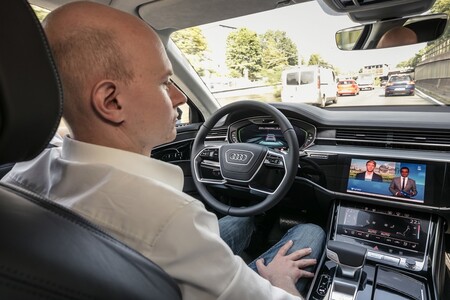Elon Musk has been waiting for me for a long time. Europe a regulatory framework clear about the circulation of autonomous cars. Already in 2019 Tesla presented a series of proposals to increase the capabilities of the Autopilot in Europe, such as the functionality that allows the car to park or leave the parking lot autonomously, so far without success.
However, Musk has assured through his Twitter that this summer Europe may address a more harmonized regulation.
Advances in the most advanced Autopilot to date

Musk has said in the famous social network that “great improvements” are being carried out in the new Autopilot, currently in beta phase and whose launch could take place in June.
The goal, the Tesla founder said, is to get a “99.99999%” non-injury probability in the city.
But one user has pointed out that for these advances to make sense, restrictions on their use in Europe must be addressed: “It is pushing back a lot of people who could buy a Tesla in Europe.”
Musk has responded that he hopes that point will be reached this summer.
Hopefully addressed this summer
— Elon Musk (@elonmusk) April 14, 2021
The UN rules currently adopted by the EU restrict use of some features of the Tesla Autopilot to their full potential, such as the Smart Summon (only available in the United States), while paralyzing features such as Navigate on Autopilot, an active guidance feature that, with driver supervision, guides the car from the garage exit to the highway (including suggesting and making changes of lane, merge, and take exits).
Thus, all OTA updates arrive first in the US, and later, if European legislation allows it, in the Old Continent, as happened last year with recognition and stopping at traffic lights (although not if it is red or green) and Stop signs.
The ‘utopia’ of seeing level 3 settled

Manufacturers such as Mercedes-Benz with the S-Class and Honda with the SENSING Elite (in fact, this is the first Level 3 automated driving technology recognized by the Japanese authorities), have gone a step further than Tesla and developed their own Level 3 autonomous driving technology.
This means that while your hands are not essential while driving, the driver must be attentive at all times to regain control of the vehicle if the system deems it necessary. Something that, as has been proven, does not always happen.

All these advances begin to be released in new models without a regulation that protects them, although from the UN they have already taken a step forward and not precisely to give wings to autonomous cars.
In June 2020, the first binding international regulation on the automation of Tier 3 vehicles, which limits the operating speed of cars equipped with this level to a maximum of 60 km / h.
It has been ratified by around 60 countries, including Japan, South Korea and the member states of the European Union, and comes into force this year.
In Motorpasión | Vices, hobbies and bad habits that end in car breakdowns
